It is difficult to discuss calmly the frightful disaster which happened in Brooklyn on Tuesday night. No such awful sacrifice of human life has ever been known in this country, shipwreck and the casualties of war alone being excepted. — New York Times editorial, Dec. 7, 1876
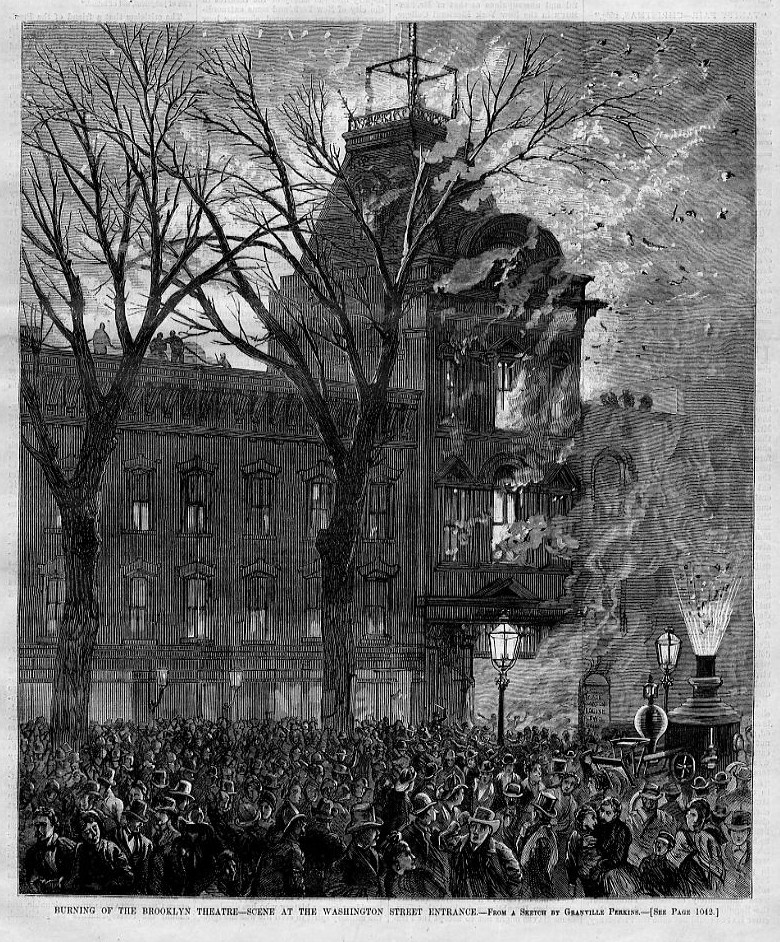
This is a black-letter day in Brooklyn. The theatre named for and worthy of the city caught fire last night and its interior parts were consumed.
It is a saddening, fearful, most calamitous story which fills the eyes and darkens the homes of the people of Brooklyn, and deposits hundreds of dead within the walls of as many families, whose sorrow becomes, by the right of sympathy, the sorrow of every heart in the town. — Brooklyn Daily Eagle, Dec 6, 1876
The charred remains of the Brooklyn Theater, courtesy Frank Leslie’s Illustrated Newspaper:
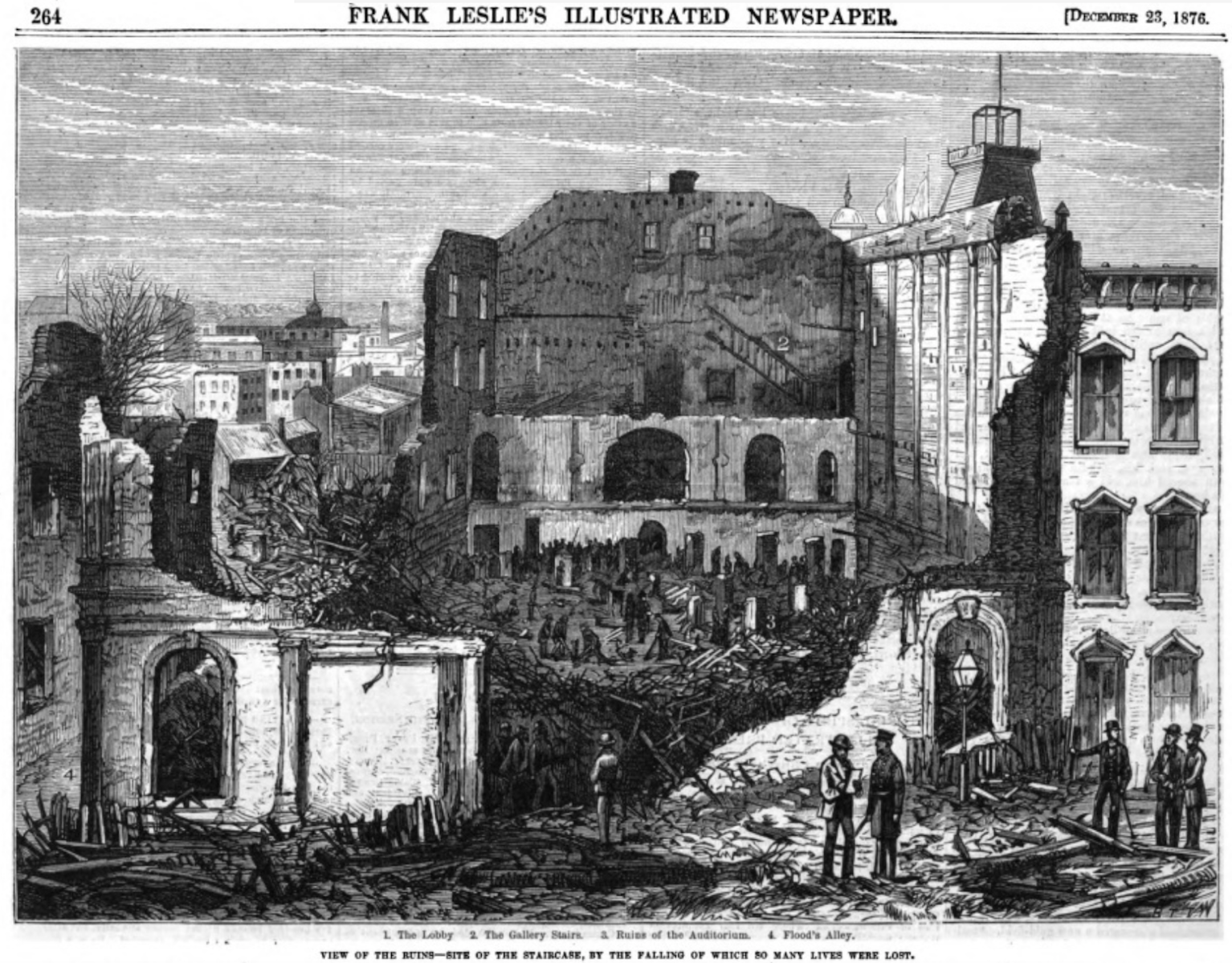
One hundred and forty-five years this evening, nearly a thousand playgoers entered the Brooklyn Theater, at Washington and Johnson streets near City Hall, to enjoy the well-reviewed (and lengthy) production of N. Hart Jackson’s The Two Orphans.
The play already had a fateful history at this theater which opened in 1871. The wife of the theater’s original owner F.B. Conway died during the first run of The Two Orphans here at the theater.
This particular versions of the play had just come from a successful run in New York. (In 1876, Brooklyn was not yet part of the city across the river.) The scenery and most of the cast was from a run at the Union Square Theater.
During the show’s final act, stage hands discovered that a set piece backstage had caught fire.
From Frank Leslie’s: “Miss Kate Claxton, attired in the ragged raiment of the poor blind girl, and one of the ‘Orphans’, was lying on a pallet of straw with Pierre, Mr. Henry S. Hitchcock leaning over her. She heard whispers from the wings behind her — ‘The theater is on fire!’
The actors onstage attempted gamely to stay in character, for fear of causing a panic, until fiery bits of wood and flaming parts of the set began raining down upon them.
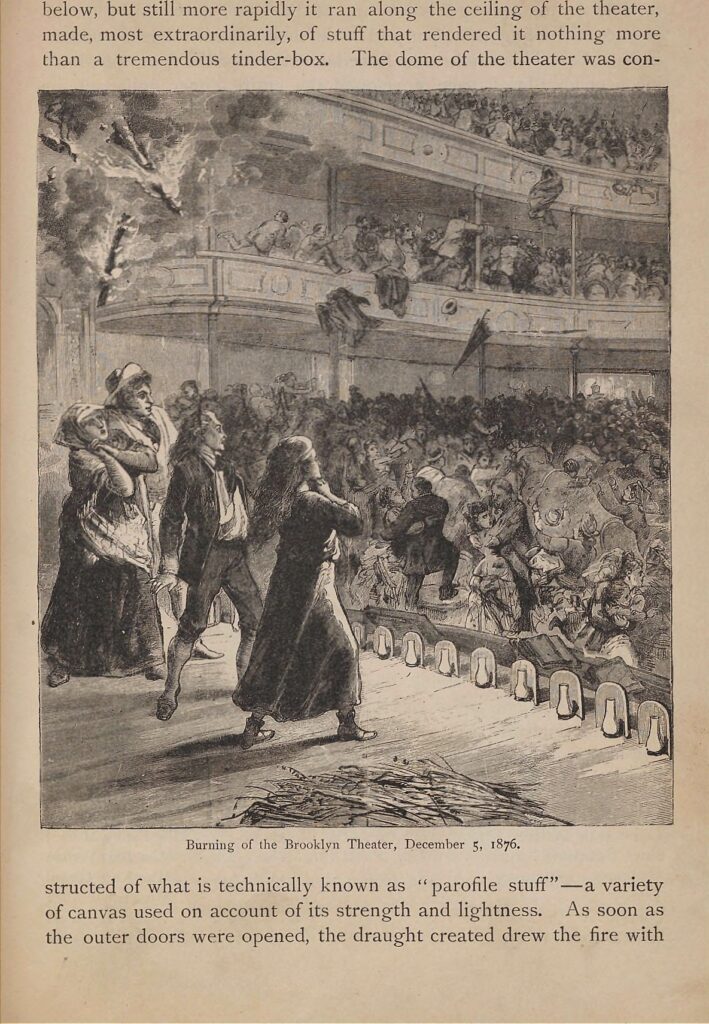
As the audience leapt to the aisles in terror, the actors tried to calm people to prevent a stampede, to no avail.
An usher forced open a rarely used exit door to free audience members, but the rush of December air only fed the flames, turning the once elegant auditorium, built only five years previous, into an inescapable trap of heat and asphyxiation.
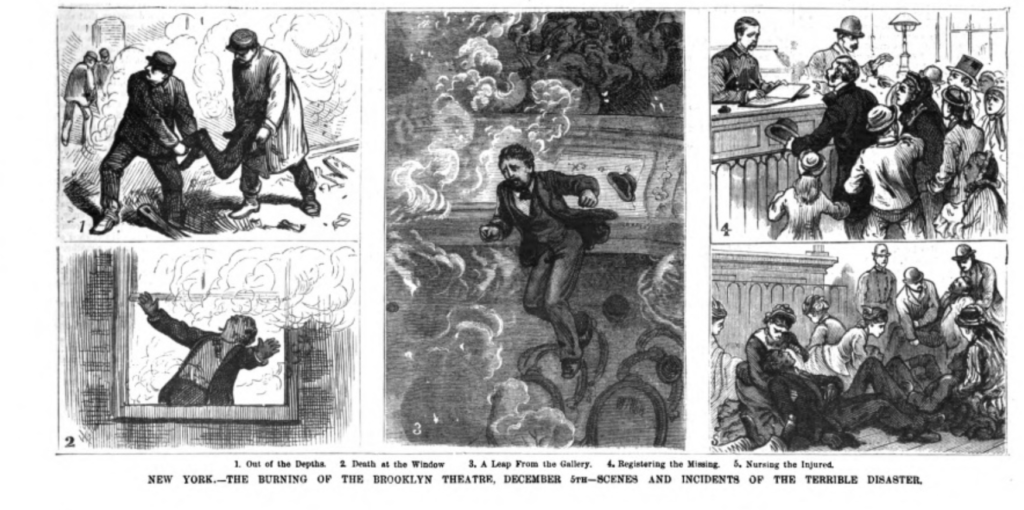
Those in the upper tiers of the theater — the ‘family circle’, or cheap seats, filled with men, women and children — were trapped by smoke within darkened foyers and unnavigable stairwells.
The panic at the stairway was caused by the tide of flying people from the auditorium meeting that rushing from the gallery, and, in the conflict between the two bodies, men fell, women fainted, children were trampled underfoot, and the whole spectacle was that of a solid body with a myriad of heads struggling for its life, retarded by its own great weight. — Frank Leslie’s Illustrated Newspaper
Some fell from balconies to their deaths. Dozens were crushed heading for doorways, and to some of those who survived, it seemed that all respectability had given way to base animal behavior.
Most perished by suffocation or underfoot, while others were lost into the oblivion of belching smoke when weakened floors gave way.
Twenty five minutes after flames were first spotted backstage, one entire wall of the Brooklyn Theater caved backwards into the inferno, the once elegant ceiling fresco nothing but a crumbling scorch now.
Flaming projectiles caught in the wind settled upon surrounding structures, and firefighters scrambled to soak the inferno, now in fear of scattering randomly through one of Brooklyn’s oldest neighborhood.
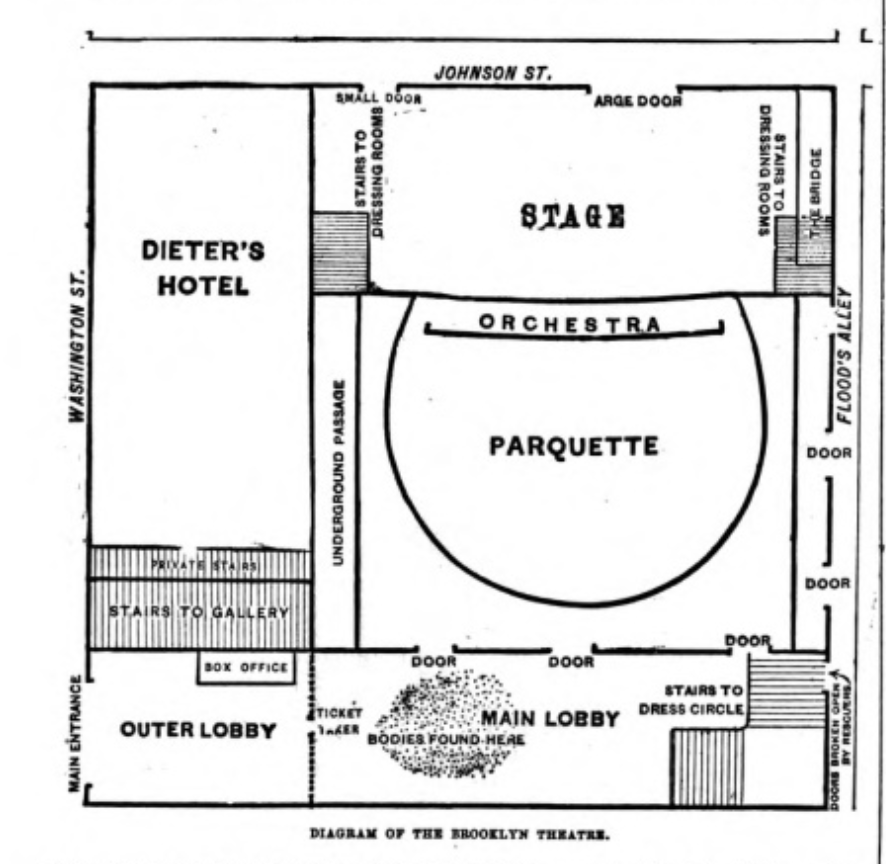
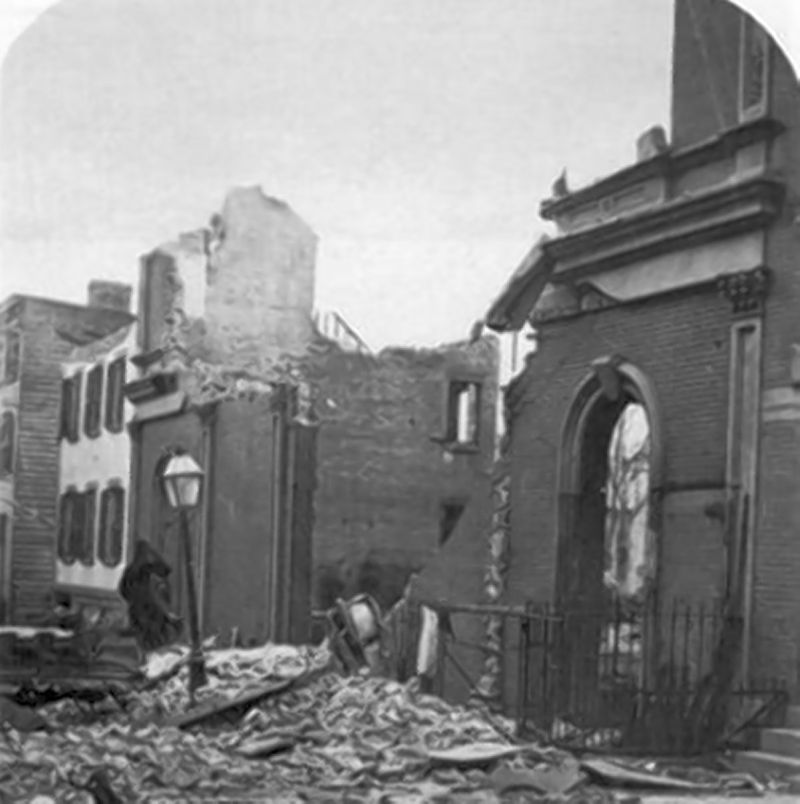
Most in danger was the hotel on the corner, where some audience members had found momentary safety.
“The streets were filled with a throng of excited people, who ran hither and thither, calling about the names of dear ones whose voices could not be heard in answer. Many were hatless and coatless, their garments having been torn from them by the pushing and jesting of the crowd. — Frank Leslie’s Illustrated Newspaper
Since 1869, Brooklyn had a paid fire department, and many fought the blaze from the streets. But the rudimentary firefighting implements of the day were unable to combat the inferno.
The Brooklyn Theater burned for several hours more, dying out by early morning. Throughout the night, most could only watch — what to do, plunge into darkness? — and many did watch. Thousands flocked, some to help, others fascinated, horrified.
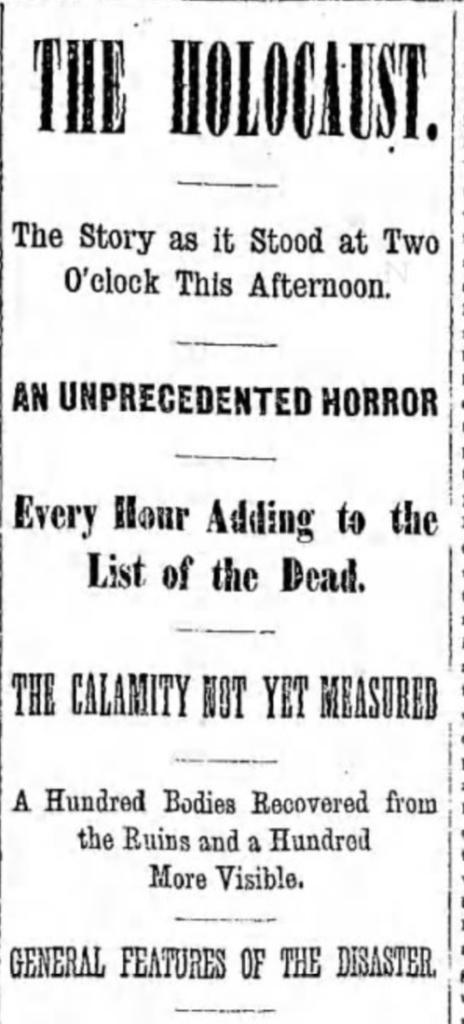
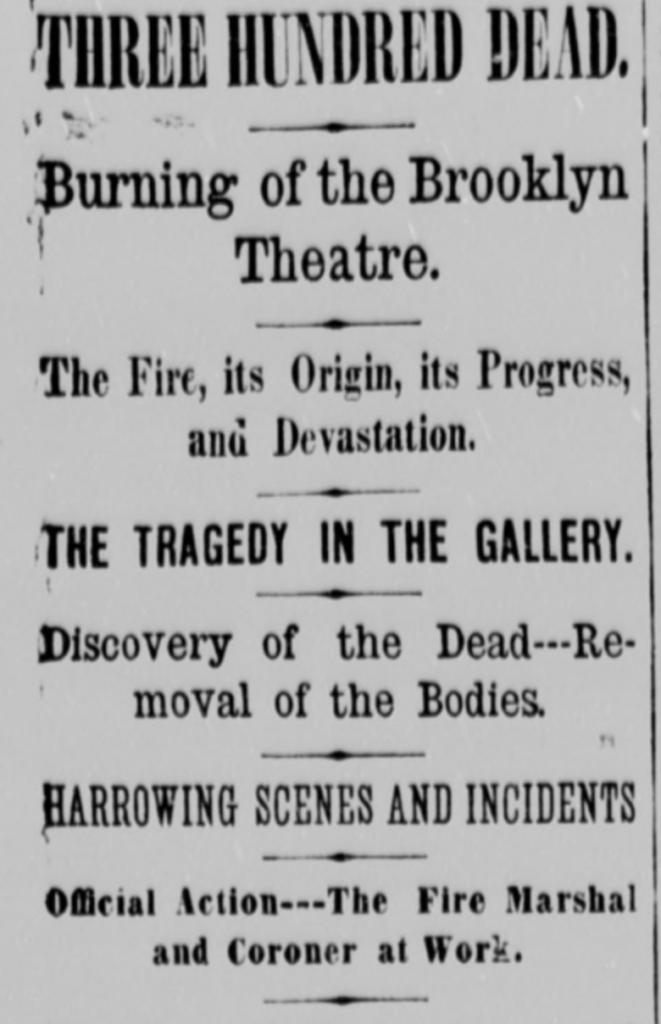
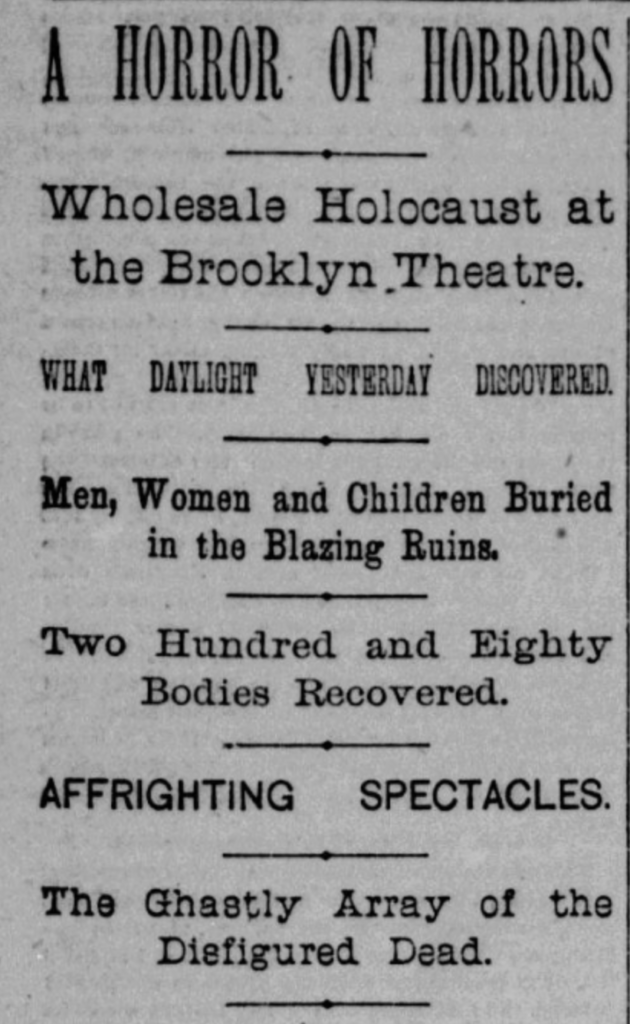
Inspectors found an unspeakably grisly sight the next morning, heaps of burned bodies in formless masses — people choked or crushed, their remains almost unrecognizable amid blackened debris.
In an eerie parallel to two later disasters (the General Slocum explosion of 1904 and the Triangle Factory Fire of 1911), a make-shift morgue was prepared on nearby Adams Street to accommodate the dozens of unidentifiable corpses.
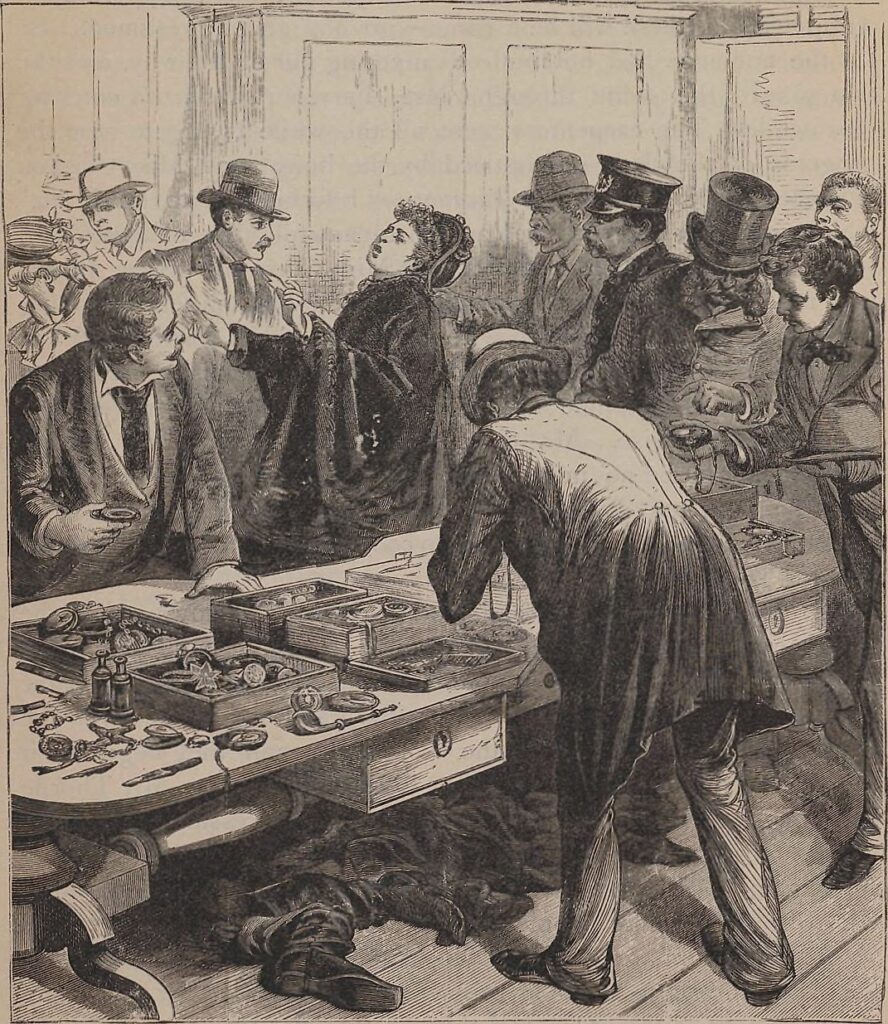
Nobody is sure exactly how many died that evening — some number between 275 to 300 people. It is certainly among the worst disasters in Brooklyn history and one of the most catastrophic fires in American history.
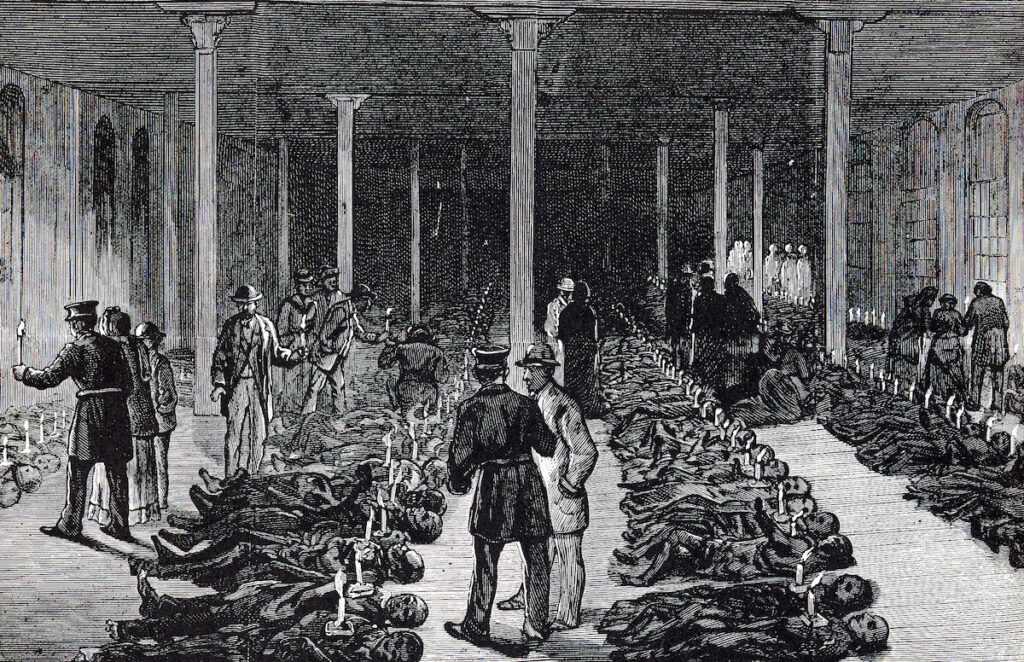
The place where the theater once stood is now occupied by Cadman Plaza, in the grove of trees just east of the Henry Ward Beecher statue. Many of the bodies (over a hundred) are buried together under a memorial at Green-Wood Cemetery.
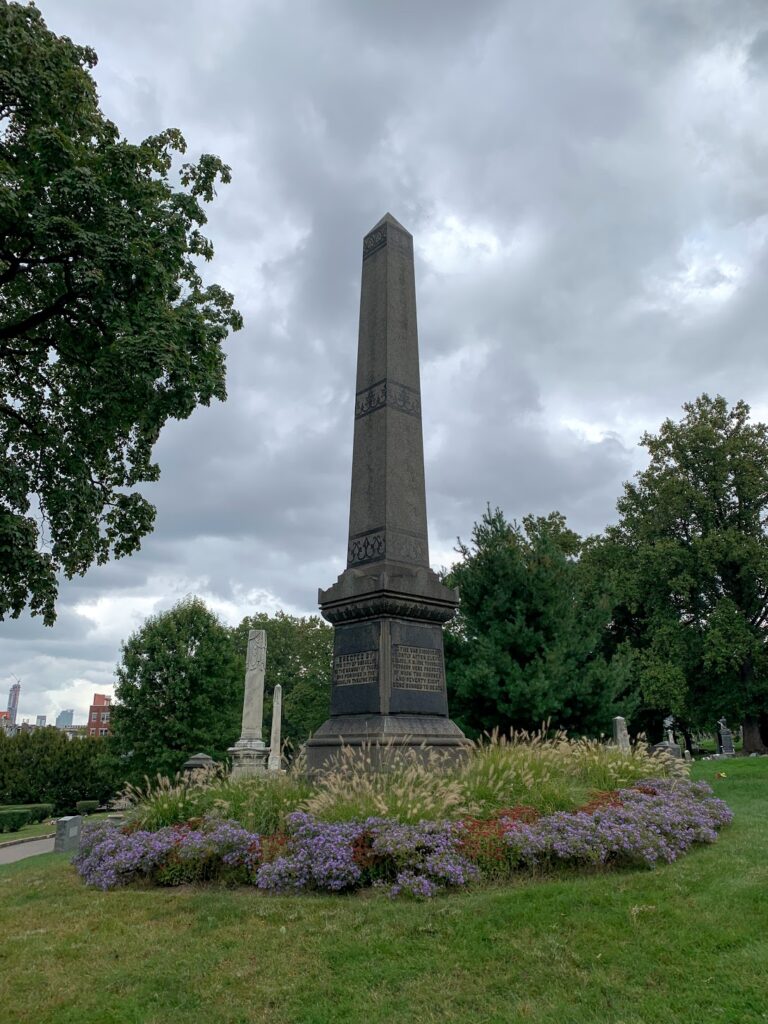
At present there is no memorial of this terrible disaster at the site itself. Nearby a statue to Brooklyn’s great citizen Henry Ward Beecher, placed here in 1959 after the construction of Cadman Plaza
Below: the area of Cadman Plaza where the Brooklyn Theater once stood.
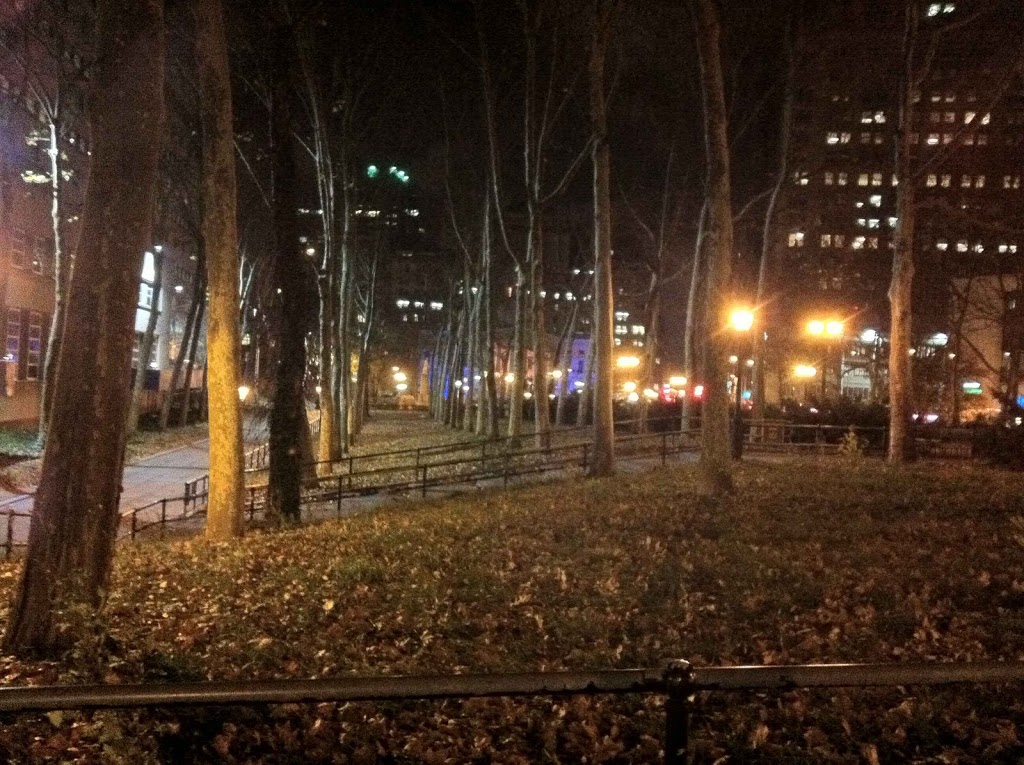
A version of this article originally ran in 2016

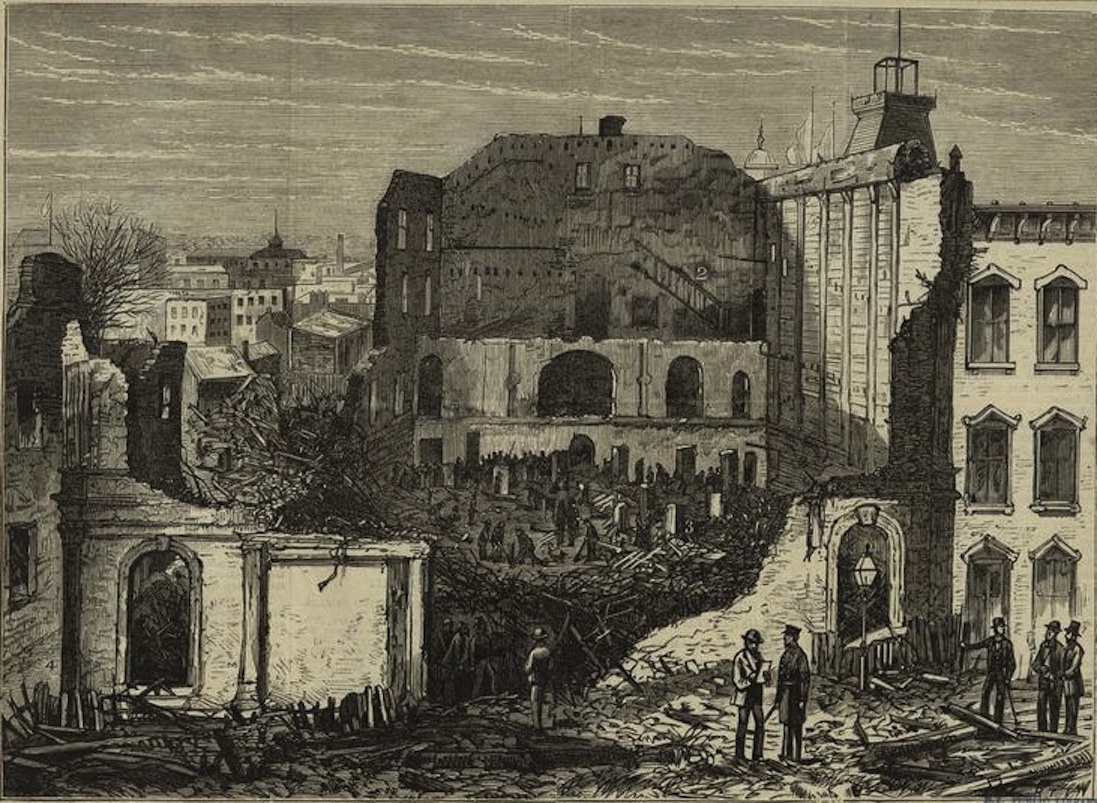
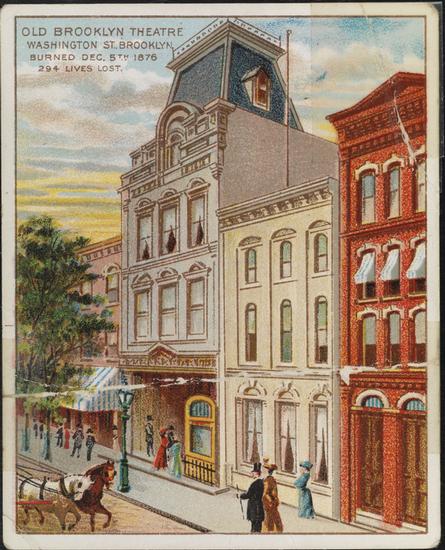
5 replies on “The Terrible Brooklyn Theater Fire: The Worst Disaster In Brooklyn History”
Tremendous summary of this horrendous event. It continues to amaze me that there is no memorial of any kind in Cadman Plaza.
What a horrific account! (And very well written and described here.) It reminds me of The Brooklyn Bridge Stampede, but this had many more tragic deaths. There should at least be a memorial plaque of the event in Cadman Plaza. I remember walking that area daily when i worked in DUMBO 20 years ago. I suppose it would take a concerted effort like a Go Fund Me for the city to erect one.
With that many lives perished, there should be a plaque. I’ve worked in this area for many years and just recently learned of this tragedy. So disrespectful for the city not to memorialize that area.
Incredible story. 58 years old, my entire life in NY, and I can’t believe I never heard about this until today. And only because I was doing some genealogy today. My great-great-grandmother lost two brothers to this fire. I can’t imagine the horror of that. Thanks for your work!